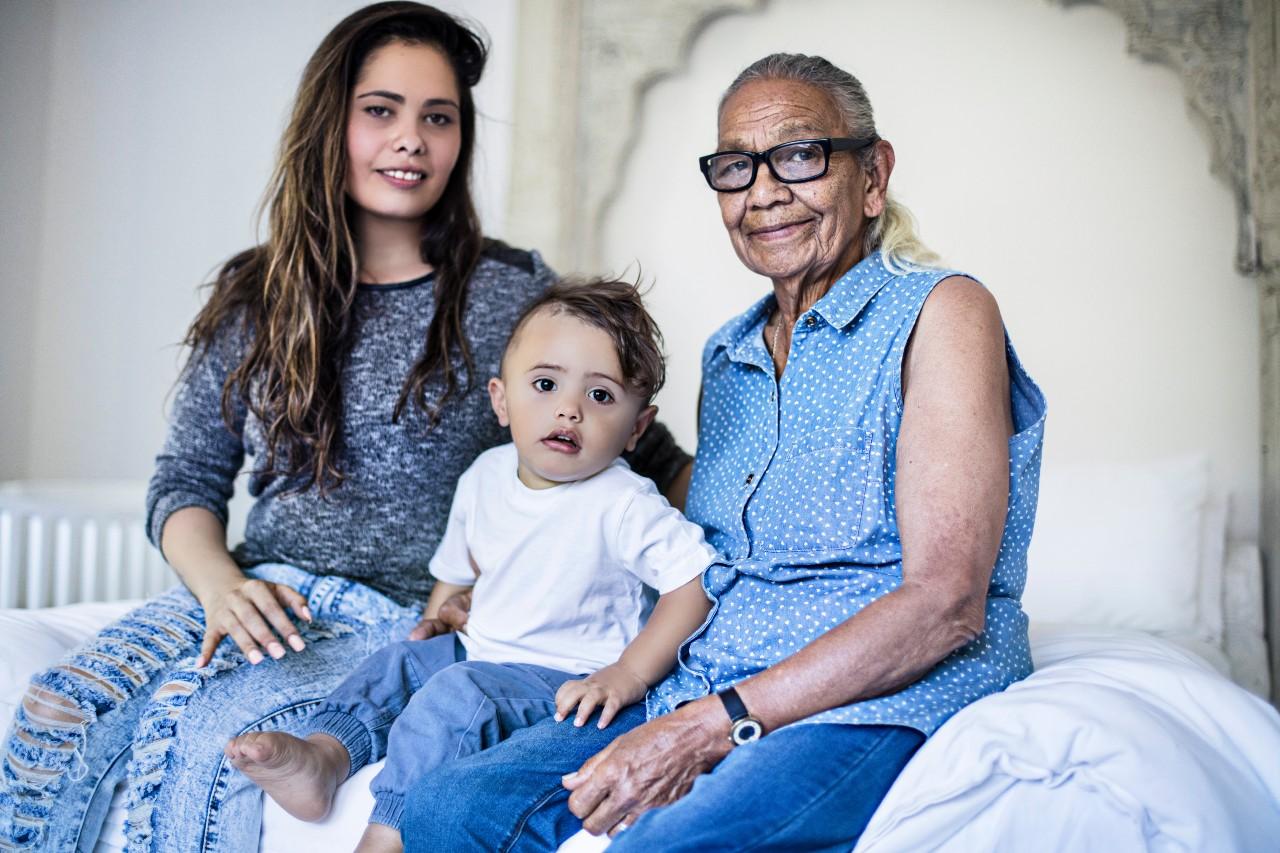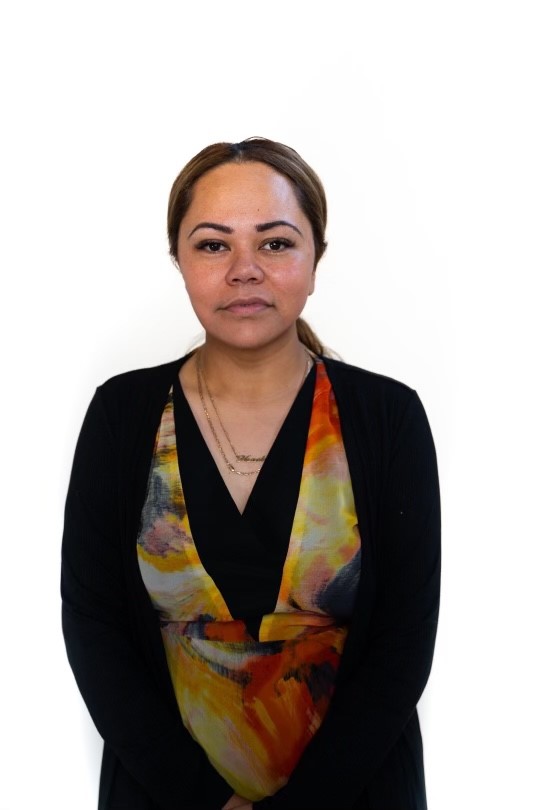
Aboriginal Housing Company Chair Alisi Tutuila talks innovation in delivering affordable housing
In this Viewpoint interview for AHURI News, we spoke with Alisi Tutuila, Chair of the Aboriginal Housing Company, about how the Company’s innovative Pemulwuy Project in Sydney’s Redfern has created an inspirational new model for delivering affordable housing for Aboriginal and Torres Strait Islander people.
25 Sep 2023
The Aboriginal Housing Company (AHC) is a 50 year old, non-profit company. It is self-funded with income derived from rental properties located across Sydney and regional NSW.
What challenges was the Pemulwuy Project aiming to resolve?
‘It’s a national housing crisis but even more so for indigenous people’, says Alisi Tutuila. ‘The overcrowding issue across our community is spoken about a lot in the regional and remote areas but it’s happening quite a lot in the city. We’ve got a lot more Aboriginal people, especially the younger generation, coming into the city to look for work so they’re couch surfing. The demand on our housing waiting lists has nearly tripled in the last 24 months. It’s quite alarming.’

To tackle the housing issues for Aboriginal people the AHC has been very innovative in redeveloping ‘the Block’ in Redfern. The Pemulwuy Project has delivered affordable housing for 62 Aboriginal and Torres Strait Islander families together with commercial/ retail space, student accommodation, childcare premises, a commercial gym and a gallery.
‘We’ve got three and four bedroom townhouses here, which is really the first of its kind in the new developments that have been happening,’ says Alisi. ‘Usually, you’ve only got units with one, or if you’re lucky two, bedrooms. Here we’ve got townhouses, which are obviously quite popular and they’ve attracted a lot of tenants back to into the community. Some of them are past tenants some are new tenants.’
‘The reason we’ve done that is because a lot of the affordable housing that’s been built is not accommodating families, bigger families. What we’re seeing is more of those larger families moving out west (to the western suburbs of Sydney), and if they’re not securing sufficient homes out west that fits their family size then they’re moving into the country. And then they’re realising they can’t quite sustain a future in the country, there’s not enough work, so they’re back here homeless.’
The need to develop an innovative funding model
To deliver the affordable housing for the Pemulwuy Project, Alisi and the AHC had to come up with a funding model that allowed the funding and building of the townhouses first before the completion of the commercial/ retail space that actually funds the affordable housing. It was a complex problem requiring an out-of-the-box solution.
‘The issue with the AHC is a lot of our stock is old,’ says Alisi. ‘A lot of those aged properties don’t even have tenants in them as they’re out of condition. We were at a position where if we didn’t commence Pemulwuy we wouldn’t have any cash flow. So, this was the only way forward for us. We don’t receive any government funding to subsidise our properties, we do that all ourselves. We needed to create a commercial vehicle that was able to create cash flow to deliver sustainable outcomes into the future for our people, including offsetting the subsidies for our affordable housing.’
Finding funding
‘We spent years of knocking on every door, every state, federal, philanthropic, indigenous land councils, like everywhere, looking for money to start. Nobody had money. In an ideal world we would have started with the commercial precinct because there's profit there. The commercial precinct would have allowed us then to be able to leverage to build the affordable housing.’
‘Our community was uneasy because they thought that if we started with the commercial we would never deliver the Aboriginal housing,’ says Alisi. ‘We had a tent embassy occupying our site for 18 months, and we had to go to the Supreme Court to get them removed.’
We had to do things backwards, which was we had to start with the affordable housing with no funding. I remember Fouad (Mr Fouad Deiri from developer Deicorp) said, “Look outside. Where is your site located?” And I'm like, “In Redfern!”, and he said, “You'll be between two of the major universities in the country [the University of Sydney and UNSW].” And that's when we knew we had to financially gear a new solution, which was to get enough beds in the student accommodation to cover the cost of the affordable housing.’
As a result, the student accommodation proposal went from 7 storeys to, ultimately, 24 storeys.
‘The Department of Planning said you're going to need to go through design excellence as this is the first high rise on this corridor. This design excellence process took us from our original, modest block of 16 storeys, to this flash trophy looking building of 24 storeys. Twenty-four storeys was the number that was critical. It meant we were able to negotiate a 99-year ground lease with a student accommodation provider, with the rent paid up front to then build the affordable housing unencumbered and debt free. Yes, they could have paid us a rental amount every year for the next 99 years but that didn't answer the solution; the solution was we needed the money now.’
Under the Pemulwuy Project model, the land stays in AHC long term ownership but the specifically designed 24 storey building is ground leased for 99 years to Scape, a provider of student accommodation across Australia.
Pemulwuy Project experience brings wealth of knowledge for future
The experience of developing the Pemulwuy Project, although arduous, has brought Alisi and the AHC a wealth of knowledge.
‘We have a great partnership with Deicorp,’ says Alisi. ‘Without them this wouldn’t have happened. Having them not just as our builders but as our mentors in the industry. Unlike your normal builders that you would just engage for a design and construct and would take everything off you, they really allowed us to be part of every part of the planning process, the development process, the modification process, with Council… We were sitting in design excellence meetings, architects’ meetings, so then we became developers. That relationship has been very critical in terms of what you see here today.’
‘I think that same model should be duplicated across the country to be able to increase Aboriginal housing. One of the biggest things for Aboriginal communities, particularly Aboriginal landholders is the lack of trust, with the government, but really with anyone. I’ve worked with a lot of different land councils and Aboriginal private companies that hold land, and their biggest issue they’ve always got is people, whether international investors or people wanting to come and buy land wanting to do deals with them, they just don’t trust anyone. So, it’s those strong trusted relationships that are key at least to start the conversation.’
The benefits of building trusted relationships
Alisi believes the AHC has an important role in building trust and understanding across the country to deliver more Aboriginal housing.
‘We have to tell our stories more. I get calls from WA and NT saying “How did you do it? How do we do it? How do we mimic what you’ve done in Redfern?” I think it’s up to us now as Aboriginal people and a proud company to go down and share this experience. To say look there are great experiences where you can still remain an independent landowner, you don’t need to sell everything to be able to deliver what you need to for your community.’
Quality housing opens new opportunities for the future
Alisi also believes the AHC has an important role in delivering different forms of quality tenure for Aboriginal people, including home ownership.
‘We’ve been doing this for 50 years so we’ve got a lot of good ways of doing things, successful ways particularly when it comes to managing Aboriginal tenants and families.’
Good quality, well managed affordable housing has an important, long lasting impact on tenants.
‘Lani (Lani Tuitavake, Chief Operations Officer at AHC) shares the stories of kids living here saying, “Oh, Auntie, we don't have to move the bucket anymore when it rains”, and then you hear these kids go, “Oh, no, I'm not going to go be a forklift driver, I'm being a doctor because I want to live flash.” You know you're lifting the standards for the next generation. These kids now have a driver because they're now living in decent housing, they've set a standard for themselves and they're like, “I don't want to go backwards”. So, that's why I say quality all the time.’
‘We also realise that to meet the demands for this housing crisis you can’t just be delivering houses. You’ve got to be able to work across the housing pathways and transition tenants out into home ownership. Because if we’re not, we’re just going to have to keep building and building. So, we’re working on a home ownership succession program to be able to work with some tenants so that they can move through that medium into their own homes.’
Alisi Tutuila will be speaking at National Housing Conference in Brisbane 10-12 October.
